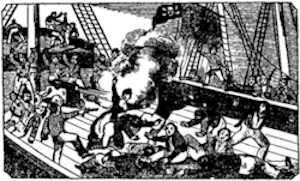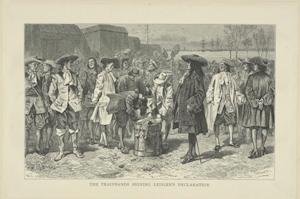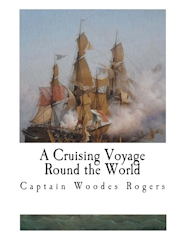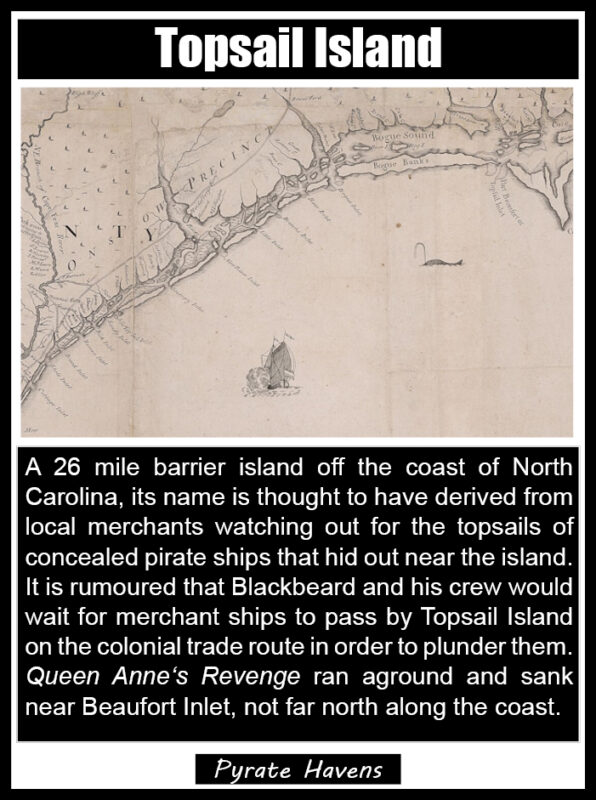 This law was enacted during the reign of Charles II and its full name was An Act to prevent the delivery up of Merchants Shipps, and for the Increase of good and serviceable Shipping. It came into being because the captains and crews of merchant vessels commonly refused to fight when attacked by pirates. The act stipulated that ships of 200 tons or more possessing at least sixteen guns were required to fight, as long as the pirate vessel didn’t have twice as many guns. Failing to resist would result in the commander being excluded from any further commands of English ships and even imprisonment.
This law was enacted during the reign of Charles II and its full name was An Act to prevent the delivery up of Merchants Shipps, and for the Increase of good and serviceable Shipping. It came into being because the captains and crews of merchant vessels commonly refused to fight when attacked by pirates. The act stipulated that ships of 200 tons or more possessing at least sixteen guns were required to fight, as long as the pirate vessel didn’t have twice as many guns. Failing to resist would result in the commander being excluded from any further commands of English ships and even imprisonment.
Author: savage
Leisler’s Rebellion
 Leisler’s Rebellion took place in New York in 1689. New York had only become an English colony in 1664 during the reign of James II. It previously had the name New Amsterdam and was part of the Dutch colony New Netherlands. After the Director-General Peter Stuyvesant surrendered to English troops, the Dutch residents were permitted to remain in the colony and were granted religious freedom. The Dutch briefly regained the colony in 1673, but it became English again under the Treaty of Westminster, which ended the third Anglo-Dutch war. The governor of the colony of New York wasn’t keen to allow an elected representative assembly, instead letting it effectively be ruled by an oligarchy of wealthy merchants. In 1688 New York became a part of the Dominion of New England, governed by Sir Edmond Andros, who governed in an autocratically with no elected legislature.
Leisler’s Rebellion took place in New York in 1689. New York had only become an English colony in 1664 during the reign of James II. It previously had the name New Amsterdam and was part of the Dutch colony New Netherlands. After the Director-General Peter Stuyvesant surrendered to English troops, the Dutch residents were permitted to remain in the colony and were granted religious freedom. The Dutch briefly regained the colony in 1673, but it became English again under the Treaty of Westminster, which ended the third Anglo-Dutch war. The governor of the colony of New York wasn’t keen to allow an elected representative assembly, instead letting it effectively be ruled by an oligarchy of wealthy merchants. In 1688 New York became a part of the Dominion of New England, governed by Sir Edmond Andros, who governed in an autocratically with no elected legislature.
A Cruising Voyage Round the World
A Cruising Voyage Round the World by Woodes Rogers (Introduction by G. E. Manwaring)
 A Cruising Voyage Round the World by Captain Woodes Rogers. With Introduction and Notes by G.E.Manwaring. Woodes Rogers (c. 1679 – 15 July 1732) was an English sea captain and privateer and, later, the first Royal Governor of the Bahamas. He is known as the captain of the vessel that rescued marooned Alexander Selkirk, whose plight is generally believed to have inspired Daniel Defoe’s Robinson Crusoe. Rogers came from an affluent seafaring family, grew up in Poole and Bristol, and served a marine apprenticeship to a Bristol sea captain. His father held shares in many ships, but he died when Rogers was in his mid-twenties, leaving Rogers in control of the family shipping business. In 1707, Rogers was approached by Captain William Dampier, who sought support for a privateering voyage against the Spanish, with whom the British were at war.…
A Cruising Voyage Round the World by Captain Woodes Rogers. With Introduction and Notes by G.E.Manwaring. Woodes Rogers (c. 1679 – 15 July 1732) was an English sea captain and privateer and, later, the first Royal Governor of the Bahamas. He is known as the captain of the vessel that rescued marooned Alexander Selkirk, whose plight is generally believed to have inspired Daniel Defoe’s Robinson Crusoe. Rogers came from an affluent seafaring family, grew up in Poole and Bristol, and served a marine apprenticeship to a Bristol sea captain. His father held shares in many ships, but he died when Rogers was in his mid-twenties, leaving Rogers in control of the family shipping business. In 1707, Rogers was approached by Captain William Dampier, who sought support for a privateering voyage against the Spanish, with whom the British were at war.…
Offences at Sea Act 1536
 In the 14th century Edward III (1327-1377) attempted to set up how admiralty courts should deal with piracy in A Remedy where a Merchant’s Good be robbed or perished on the Sea, but these were rather vague laws and there was often the problem of overlapping jurisdictions when dealing with such a crime. It was wasn’t until the reign of Henry VIII (1509–1547) that significant anti-piracy laws were enacted. Originally titled An Act for Pirates and Robbers on the Sea issued in 1535, it was renamed The Offences of Sea Act in 1536.
In the 14th century Edward III (1327-1377) attempted to set up how admiralty courts should deal with piracy in A Remedy where a Merchant’s Good be robbed or perished on the Sea, but these were rather vague laws and there was often the problem of overlapping jurisdictions when dealing with such a crime. It was wasn’t until the reign of Henry VIII (1509–1547) that significant anti-piracy laws were enacted. Originally titled An Act for Pirates and Robbers on the Sea issued in 1535, it was renamed The Offences of Sea Act in 1536.
This act allowed crimes such as robbery and murder to be tried as if they occurred on land. They could be tried in any county in England in any court commissioned by the king under related common law provisions for these offences. Those found guilty of piracy and treason at sea could not only be sentenced to death, but also have their lands and possessions seized.…

